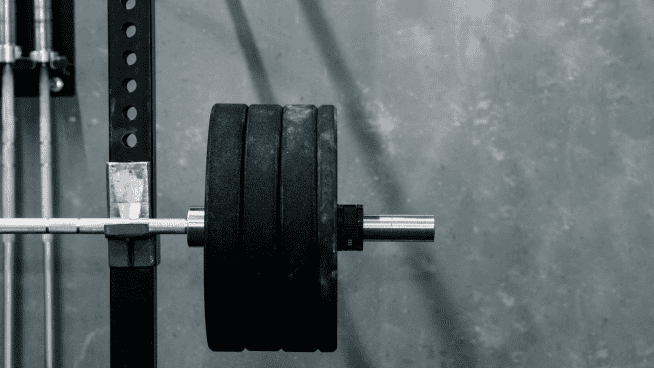How to Build a Meal Plan to Suit Your Body Type
![]()
The nutrition you need depends not only on how active you are and what sport you play, but also on your body type. There are three basic types: ectomorph, mesomorph and endomorph.
Below are some diet guidelines for each type, so you can develop a meal plan to get the fuel you need and stay in shape. However, you may need to make some adjustments along the way, since you may be one type but have some characteristics of another.
Ectomorphs
Ectomorphs are usually thin individuals with small bone structure and limbs. They are typically endurance athletes, with a fast metabolism and a high tolerance for carbohydrates. They do best when they bring more carbohydrates into their diets with normal amounts of protein and lower fat intake. The best breakdown: 55 percent carbs, 25 percent protein and 20 percent fat. But don’t worry too much about the math—just focus on higher carbs, lower fat.
Male ectomorphs need to fill their plates with at least three handfuls of carb-related food, two palms of protein and two fists of vegetables (yes, you do need to eat your veggies). You can also add a thumb-sized portion of fat. Female athletes should reduce each number by one for their plates.
RELATED: The Ectomorph Workout Program: Building Muscle for the “Skinny Guy“
Mesomorphs
Mesomorphs are usually medium-sized people with athletic body shapes. If they are active, they usually have a considerable amount of lean mass. Mesomorph athletes are usually in explosive sports, like wrestling and gymnastics. They tend to gain muscle and maintain a low percentage of body fat.
A typical diet for a mesomorph is more balanced than that of an ectomorph. Their macro split should be more in the range of 40 percent carbs, 30 percent protein and 30 percent fat. A normal plate for a mesomorph would consist of two palms of protein, two fists of vegetables, two cupped handfuls of carbs and two thumbs’ worth of fat. Again, female mesomorph athletes should drop each portion by one.
Endomorphs
Endomorphs are usually big-boned and hold a higher amount of total body mass and fat mass. This type is best illustrated by a football lineman or a power lifter.
Ectomorphs burn off excess calories with constant movement, but endomorphs do not burn calories as quickly. Instead, their calories are stored as fat. If you’re an endomorph, you should watch your carb intake, as it can greatly affect your performance on the field. Endomorphs usually work best with higher fat and protein intake and closely monitored carb intake (preferably timed throughout the day around their exercise.)
The nutritional breakdown should be around 25 percent carbs, 35 percent protein and 40 percent fat. A typical plate would be two palms of protein, two fists of vegetables, one cupped handful of carbs, and three thumbs of fat. Female athletes lower each number by one.
RELATED: The Role of Genetics In an Athlete’s Strength Potential
Source: Precision Nutrition
[cf]skyword_tracking_tag[/cf]RECOMMENDED FOR YOU
MOST POPULAR
How to Build a Meal Plan to Suit Your Body Type
![]()
The nutrition you need depends not only on how active you are and what sport you play, but also on your body type. There are three basic types: ectomorph, mesomorph and endomorph.
Below are some diet guidelines for each type, so you can develop a meal plan to get the fuel you need and stay in shape. However, you may need to make some adjustments along the way, since you may be one type but have some characteristics of another.
Ectomorphs
Ectomorphs are usually thin individuals with small bone structure and limbs. They are typically endurance athletes, with a fast metabolism and a high tolerance for carbohydrates. They do best when they bring more carbohydrates into their diets with normal amounts of protein and lower fat intake. The best breakdown: 55 percent carbs, 25 percent protein and 20 percent fat. But don’t worry too much about the math—just focus on higher carbs, lower fat.
Male ectomorphs need to fill their plates with at least three handfuls of carb-related food, two palms of protein and two fists of vegetables (yes, you do need to eat your veggies). You can also add a thumb-sized portion of fat. Female athletes should reduce each number by one for their plates.
RELATED: The Ectomorph Workout Program: Building Muscle for the “Skinny Guy“
Mesomorphs
Mesomorphs are usually medium-sized people with athletic body shapes. If they are active, they usually have a considerable amount of lean mass. Mesomorph athletes are usually in explosive sports, like wrestling and gymnastics. They tend to gain muscle and maintain a low percentage of body fat.
A typical diet for a mesomorph is more balanced than that of an ectomorph. Their macro split should be more in the range of 40 percent carbs, 30 percent protein and 30 percent fat. A normal plate for a mesomorph would consist of two palms of protein, two fists of vegetables, two cupped handfuls of carbs and two thumbs’ worth of fat. Again, female mesomorph athletes should drop each portion by one.
Endomorphs
Endomorphs are usually big-boned and hold a higher amount of total body mass and fat mass. This type is best illustrated by a football lineman or a power lifter.
Ectomorphs burn off excess calories with constant movement, but endomorphs do not burn calories as quickly. Instead, their calories are stored as fat. If you’re an endomorph, you should watch your carb intake, as it can greatly affect your performance on the field. Endomorphs usually work best with higher fat and protein intake and closely monitored carb intake (preferably timed throughout the day around their exercise.)
The nutritional breakdown should be around 25 percent carbs, 35 percent protein and 40 percent fat. A typical plate would be two palms of protein, two fists of vegetables, one cupped handful of carbs, and three thumbs of fat. Female athletes lower each number by one.
RELATED: The Role of Genetics In an Athlete’s Strength Potential
Source: Precision Nutrition
[cf]skyword_tracking_tag[/cf]









